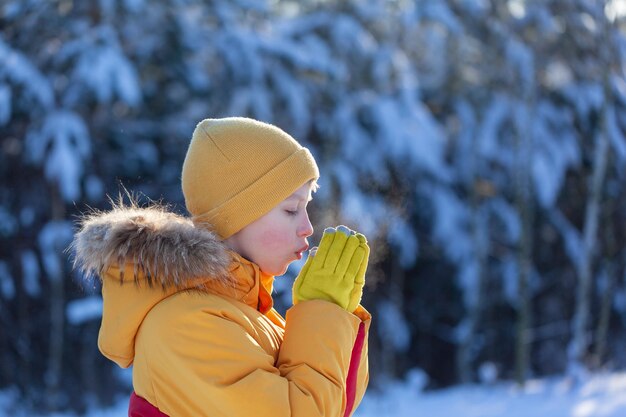As winter brings colder temperatures, it’s essential for parents and caregivers to be aware of frostbite, especially in children who may be more susceptible to the cold. Frostbite occurs when skin and underlying tissues freeze, leading to serious complications if not addressed promptly. Recognizing the early signs and symptoms is crucial for prevention and treatment.
Understanding Frostbite
Frostbite commonly affects extremities such as fingers, toes, earlobes, and the nose. It occurs when the skin and blood vessels constrict to conserve heat, causing reduced blood flow and freezing of the affected areas. Children, due to their smaller body size and often limited awareness of cold exposure, are at a higher risk.
Early Signs of Frostbite
- Cold, Painful Skin: Initially, the skin may feel cold to the touch and painful. Children might complain of discomfort or pain in the affected areas.
- Redness and Swelling: As frostbite progresses, the skin may appear red and swollen. This redness can indicate that the skin is still at risk, and parents should act quickly.
- Numbness or Tingling: Affected areas may begin to lose sensation. Children might describe a tingling or “pins and needles” feeling, indicating nerve damage.
- Pale or White Skin: The skin may become pale or even turn white. This change in color is a sign that blood flow is severely restricted, and immediate action is needed.
- Blisters: In some cases, blisters may develop on the skin. These can be filled with fluid and can occur a day or two after exposure.
What to Do if You Suspect Frostbite
- Move Indoors: If you suspect that a child has frostbite, immediately move them to a warmer environment.
- Warm the Affected Areas: Gradually warm the frostbitten areas using warm (not hot) water or body heat. Avoid direct heat sources such as fires or heating pads, as they can cause burns.
- Remove Wet Clothing: Wet clothing can contribute to further heat loss. Replace it with dry, warm clothing.
- Avoid Rubbing the Skin: Rubbing or massaging the frostbitten areas can cause more damage to the tissue. Handle the affected areas gently.
- Seek Medical Attention: If symptoms persist or worsen, seek medical attention promptly. Severe frostbite may require professional treatment.
Prevention Tips
- Dress in Layers: Ensure that children wear multiple layers of clothing, including thermal underwear, to retain body heat.
- Limit Exposure Time: Keep outdoor playtime to a minimum during extremely cold temperatures, especially with wind chill factors.
- Encourage Breaks: Encourage children to take breaks indoors to warm up and check for any early signs of frostbite.
- Educate Children: Teach children about the dangers of cold weather and encourage them to communicate if they feel too cold or uncomfortable.
Being aware of the early signs and symptoms of frostbite in children can help prevent serious complications. Parents and caregivers should take proactive measures to protect children during cold weather and respond quickly if frostbite is suspected. By prioritizing safety and education, we can ensure that children enjoy winter activities while staying warm and healthy.










